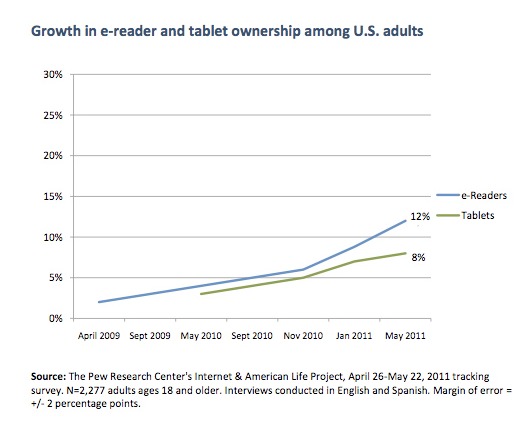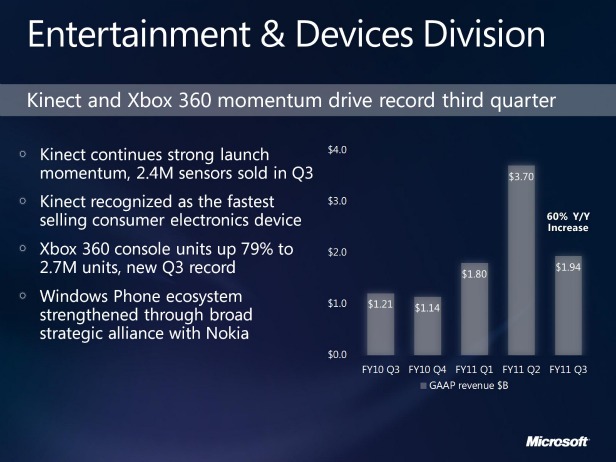Apple kicked off its Worldwide Developers Conference today, and Steve Jobs was joined by SVP WW Product Marketing Phil Schiller and VP, Mac OS X Software, Craig Federighi for some demos. First up was Mac OS X Lion, which had been previewed previously for developers.
Then came the next version of the operating system that powers the iPhone, iPad, and iPod Touch devices – iOS 5. Scott Forstall, SVP iOS Software took the stage to demo the OS update.
Stats according to Apple
– over 200 million iOS devices sold
– iOS the “number one mobile operating system” with over 44% of the market
– over 25 million iPads sold
– over 15 billion songs sold through iTunes
– 130 million book downloads from the iBookstore
– there are 90,000 iPad apps
– over 14 billion apps downloaded from the App Store
– Apple has paid over $2.5 billion to developers
– over 225 million accounts with credit cards and 1-click purchasing
– over 100 billion notifications pushed
– 1 billion tweets sent per week (read on for relevance of that)
– nearly 2/3 of all mobile web browsing done through Safari
– over 100,000 game and entertainment titles in the App Store
– 50 million Game Center users (that’s in nine months, and is compared to Xbox live getting 30 million in 8 years)
iOS 5
With iOS 5, there are 1,500 new APIs, and 200 new user features. There are 10 “key features” according to Apple.
There is a “Notification Center” that aggregates all of your notifications, and can be accessed simply by swiping down from the top of the screen, not unlike Android notifications. It shows stocks and weather at the top of the screen. It will display a little pop up at the top to let you know about it while you’re watching a video or playing a game, then it will go away.
There is a “Newsstand” feature that automatically downloads (in the background) the latest issues of magazine and newspaper apps that you’re subscribed to, and keeps the available for online or offline access from one place.
iOS 5 comes with built-in Twitter integration, where you save your Twitter info, which can easily be shared with any other app. This will make it easy to simply Tweet just about anything from the device. Twitter can be used to automatically update contacts (if they’re on Twitter).
Safari gets some new features, such as a button called “Safari Reader,” which converts articles into just text (publishers and advertisers are going to take some issue with this). It lets you email the content to contacts.
There is also a “Reading List” feature that lets you save stories to read later (on multiple devices), and there is now tabbed browsing, which should please a lot of people.
There is a new “Reminders” feature that lets you keep lists, assign reminders to specific dates and locations – so you can get reminded of something as you leave/arrive from a specific place. This can also be synced across devices.
iOS 5 comes with some camera upgrades, such as a camera icon on the lock screen, for quicker access to the camera app. You can use the volume up button to take pictures. You can pinch to zoom in the app, and you can edit photos directly on the phone (cropping, rotating, red-eye reduction).
Mail comes with rich-text formatting, indentation control, draggable addresses, the ability to mark items as unread, search within message content, and S/MIME.
The operating system now has a dictionary feature that is accessible from any app. You can tap a word, go to “define,” and get definitions.
There’s a new keyboard feature that lets you split the keyboard apart for more comfortable typing.
One major new feature is that they’re “cutting the cord,” no longer requiring set-up by connecting to a PC. Devices can be set up and activated right out of the box. Software updates don’t require plugging in either. Updates are “Delta,” meaning it only updates what needs to be updated, as opposed to the entire thing.
Calendars can be created and deleted from the phone. The iTunes library can be synced over WiFi.
The Game Center shows achievement points – scores of friends’ friends, and includes friend and game recommendations. It also lets you purchase games right from the Game Center itself. Turn-based games can be played from the OS.
Messaging in iOS now works among any iOS user, whether they’re using an iPhone, iPad or iPod. This goes for text messages, pictures, or videos, and includes group messaging. You can switch devices yourself in the middle of conversations as well.
The SDK comes out today for developers. iOS 5 will ship to customers in the fall. It will support iPhone 3GS and iPhone 4, iPad, iPad 2, and iPod Touch (3rd and 4th gen).

























